Review for One Piece Collection 2
Introduction
It’s time to resume the hunt for wealth, fame and power, as Manga Entertainment release the second part of One Piece in the UK. They’re doing their best to ensure that I have a constant drip feed of shonen anime, the stories targeted at a young teen male audience, with episodes spanning fights, success through superior willpower, and yelling out the names of special moves. How do you know if a soldier is an anime fan? If he yells out “Depleted Uranium Ultimate Ass-Whooping!” every time he fires a tank cannon shell. One Piece actually makes it easier than the average anime, no ‘Kagebunshin no Jutsu’ or ‘Getsugatensho’ to remember here. Just stick a ‘Gum Gum’ in front a relatively innocuous weapon or even household object, and you’re good to go. ‘Gum Gum Pistol’ and ‘Gum Gum Bazooka’ are relatively easy to understand and remember if you’re out cosplaying, and as an episode of Yuruyuri that I watched recently reminded me, getting a beloved character’s catchphrase wrong when you’re cosplaying is the quickest way to break a child’s heart. Anyway... Gum Gum Keyboard...
Monkey D. Luffy wants to be a pirate. No he wants to be the best pirate of them all, sail the Grand Line, find the legendary One Piece treasure left behind by Gold Roger, and become the Pirate King. He’s inspired in this by his mentor, Red-Haired Shanks, who saved his life when he was a child. He also ate the Gum-Gum fruit, a devil fruit which has given him stretchy rubber limbed abilities, although at the cost of his ability to swim. You’d think this would be a fatal handicap in a pirate, but Luffy has set sail nevertheless, looking to gather the best crew on the high seas, and venture forth onto the Grand Line. The first candidates for his crew include the mighty pirate-hunter swordsman, Roronoa Zoro, the skilled, pirate-hating thief Nami, the world’s greatest liar, Usopp, and the toughest chef around, Sanji.
Previously on One Piece, it looked like Luffy had just about got his crew together, or at least enough of a crew to set course for the Grand Line. They’d made it to the ocean going restaurant Baratie, where Luffy had set his eyes on sous chef Sanji as his ship’s cook. Except that it turns out that some pirates are back-stabbers, liars, and cheats, who’d have figured? Nami only went and stole the Going Merry and set sail alone. Before they could go after her, Don Krieg and his Krieg pirates showed up, having barely survived the Grand Line, and set about stealing the Baratie as their next pirate ship. Naturally Sanji and the pirate chefs fought back. With Usopp taking a battered Zoro with him to go and chase after Nami, Luffy was left behind to take a stand against Don Krieg, and fight alongside Sanji and the others at the restaurant...
The next 27 episodes of One Piece are presented across 4 discs from Manga Entertainment.
27. Cool-Headed, Cold-Hearted Demon! Pirate Fleet Chief Commander Ghin!
28. I Won’t Die! Fierce Battle, Luffy vs. Krieg!
29. The Conclusion of the Deadly Battle! A Spear of Blind Determination!
30. Set Sail! The Seafaring Cook Sets Off With Luffy!
31. The Worst Man in the Eastern Seas! Fishman Pirate Arlong
32. Witch of Cocoyashi Village! Arlong’s Female Leader!
33. Usopp Dead?! When is Luffy Going To Make Landfall?!
Disc 2
34. Everyone’s Gathered! Usopp Speaks The Truth About Nami!
35. Untold Past! Female Warrior Bellemere!
36. Survive! Mother Bellemere and Nami’s Bond!
37. Luffy Rises! Result of the Broken Promise
38. Luffy in Big Trouble! Fishmen vs. The Luffy Pirates!
39. Luffy Submerged! Zoro vs. HATCHAN The Octopus!
Disc 3
40. Proud Warriors! Sanji and Usopp’s Fierce Battles!
41. Luffy at Full Power! Nami’s Determination and the Straw Hat!
42. Explosion! Fishman Arlong’s Assault from the Sea!
43. End of the Fishman Empire! Nami’s My Friend!
44. Setting Out With a Smile! Farewell, Hometown Cocoyashi Village!
45. Bounty! Straw Hat Luffy Becomes Known to the World!
46. Chase Straw Hat! Little Buggy’s Big Adventure!
Disc 4
47. The Wait is Over! The Return of Captain Buggy!
48. The Town of the Beginning and the End! Landfall at Loguetown!
49. Kitetsu III and Yubishiri! Zoro’s New Swords and the Woman Sergeant Major
50. Usopp vs. Daddy the Parent! Showdown at High!
51. Fiery Cooking Battle? Sanji vs. the Beautiful Chef!
52. Buggy’s Revenge! The Man Who Smiles on the Execution Platform!
53. The Legend Has Started! Head for the Grand Line!
Picture
Manga Entertainment and Toei logos precede the content on the disc, which dating from 1999 is presented in 4:3 regular format. However, with this second release of One Piece, the show gets a native PAL transfer with 4% speed-up. The low resolution and ghosting of the first instalment is long forgotten now, with an image that is clear and sharp throughout. In terms of clarity and detail, this release is a big improvement over the first, but there’s no getting away from the vintage and the budget of the show. There is a bit of rainbowing around fine detail, but by and large the biggest problem with the transfer is the compression artefacts around fast motion, bursts of mosquito noise that on occasion are distractingly obvious. Also on a rare occasion, the quality of a scene will suddenly drop, aliasing will increase and the image will take on a static feel, as if it’s just a placeholder for an animation that was never completed.
One Piece looks like an early digipaint show, an anime accomplished wholly in the innards of a computer, and the stability of the image, absence of flicker and print damage tends to support that. There are moments where the show can look a little too static and obviously digital, but on the other hand, there are moments where the animation really takes a walk on the wild side, bringing to mind the wackiness of Tex Avery cartoons and the like. This is a show where surprise can make people’s eyeballs bug out of their sockets, and their jaws drop to the floor.
Sound
You have the choice of DD 5.1 Surround English, and DD 2.0 Stereo Japanese, with optional translated subtitles and a signs only track. I’m still to try the dub while in a waking state, although give the quantity and rate of One Piece coming to the UK, that isn’t very likely. As usual, I watched the series through in Japanese with subtitles, and found a fairly standard shonen anime dub, with enthusiastic and over the top performances that suit the tone of the show well. The stereo does a good job in conveying the show’s ambience and action sequences, while you get an instant hit of spatial separation in the audio with the opening shot of seagulls. Where One Piece really impresses is in its music score. Far from the comparatively weedy synth efforts afforded to the usual anime shows, One Piece apparently gets a full on orchestral score, at times giving the show an epic and grand soundscape that by far belies its comic book origins.
The subtitles are free of error and are accurately timed, except for one subtitle 1.25:26 into disc 1 that was mistimed. The second boxset also debuts some new theme songs.
Extras
The discs present their content with static menus set to the English version of the theme song, with jacket pictures to look at when the discs are at rest in compatible players.
Disc 1’s sole extra is the audio commentary on episode 30, hosted by ADR director Mike McFarland, with the voice of Sanji, Eric Vale. Eric Vale is also one of the head writers on the show, overseeing its adaptation from the original Japanese, so this commentary covers both of his roles on the show. That said, it’s another identikit Funimation commentary track, differing little from the usual contributions, and I found it nice to have on in the background while I was doing a crossword.
Disc 2 gets the textless credits.
Disc 3 gets a commentary for episode 44 with Line Producer and occasional One Piece ADR director Mike McFarland, and he’s joined by Luci Christian (Nami), and the ADR director for this particular episode, Jason Grundy, and it’s a nice informative commentary that offers a little more insight into the ADR process, especially from a sound engineer perspective (Grundy used to be an engineer).
Disc 4 gets the textless credits again, with the new Eurobeat opening theme among them. This is one of those releases where the textless credits get player forced subtitles for the Japanese versions, which render them less than textless. You can watch them pristine, but you’ll have to put up with the English dub versions.
The next episode preview for episode 53 was missing during playback.
Conclusion
Fifty-three episodes in, and we still haven’t got to the Grand Line yet! That is the hallmark of a long-running shonen anime of course; don’t put off today what you can put off tomorrow as well. Procrastination is the name of the game, stretching storylines to tenuous excess, sweetening the anticipation, and building the fan fervour. Of course it’s easy to get wrong. You could wind up with half an episode of recap, or a stretch of filler that runs to over a season. You could pad a fight out with so many flashbacks, audience commentary, and the obligatory triple pan, that a simple exchange of fists turns into some kind of strategic chess match. Dragon Ball Z had the longest ten minutes in history, while some of Naruto’s filler gets completely ridiculous. The less said about Bleach’s non-action action sequences the better. But with its first 53 episodes, One Piece has been navigating the Grand Line between timely entertainment and delayed gratification like a master.
Yes, One Piece is long, and yes, it’s definitely longer than it needs to be. You could tell this story in half the time and not lose the story. In essence, the story would even be stronger as it would flow more briskly, and lose the extra padding. Also with the constant formula of credits, next episode previews, and recaps at the start of each episode, I kept looking for a Dragon Ball Z style Marathon mode, even though the recaps are nowhere near as lengthy as those in Dragon Ball Z. But the way that One Piece tells its story is so perfectly judged, that even during the least engaging arcs, it will take it to the edge of incipient tedium, before delivering a wake-up call of narrative, action or slapstick comedy that will suddenly engage the senses once more. Even when it’s just idling, One Piece manages to hold the attention, and that’s something that Naruto never achieved, much as I love the luminescent orange ninja.
Of course, for One Piece this is still early days, and who knows how I’ll feel about it 150 episodes down the line. But at this moment in time, One Piece is a thoroughly enjoyable and well crafted shonen anime adventure series, heavy on the laughs, and heavy on the slapstick action. With this collection of episodes, it also reveals some appealing storytelling chops, with the most engaging character arc yet. It hasn’t yet delivered anything as jaw-droppingly awesome as the story that I’m currently hooked on with Naruto Shippuden, but One Piece has a consistency to it that very much appeals.
I have to admit that the Baratie arc that introduces Sanji isn’t my favourite stretch of One Piece. It suffers a little from character overload, and the villain of the piece is unimpressive. It’s also broken up by the Hawk-Eye interlude that throws a full-stop into the momentum of the narrative. Thankfully that arc is quickly resolved in the first four episodes on this disc, and what follows is the best of One Piece so far, The Arlong arc.
If I thought that Don Krieg was an unimpressive villain, then Arlong surely makes up for that, filling the screen with his scenery chewing dastardliness. And let’s face it, he more than has the teeth to chew scenery. What’s more is that this arc fills in Nami’s back story, and it’s the first time that the story really manages to engage the emotions. Arlong and his crew of pirates are fishmen, mutants with the characteristics of fish and humans, and they consider themselves superior. They invaded Nami’s island and set up their base there as they established themselves as the most ruthless pirates in the East Blue Sea. For the inhabitants of the local villages, they set up an extortion racket, demanding that every man, woman and child pay a regular fee for the right to stay alive. Nami’s adoptive family was poor. Worse, when Arlong discovered Nami’s talents for drawing maps and sea charts, he put her into indenture as his official cartographer, although to give her incentive, he made her a deal with which she could one day free her village.
That explains just why Nami is a thief, and a thief who prefers to steal from pirates. When she steals the Going Merry and heads back home, it’s because she thinks that she’s finally stolen enough to match the terms of Arlong’s deal, but Arlong isn’t ready to give up his expert cartographer just yet. It’s hard not to be moved by Nami’s tragic back-story, made all the more effective by the hateful character of Arlong. It goes some way to explaining why Nami is so independent and untrusting of others. This arc also delivers in terms of character development. Strong and independent Nami may be, but in the face of Arlong and his pirates, she and the other villagers are powerless. Nami finally has to trust someone and ask for their help, and that someone turns out to be Luffy and the other Straw Hat Pirates. One Piece is great at invoking vicarious emotions in the viewer, and you’d be hard pressed not to sympathise with Nami as she goes through the trials of this arc. Independent that she is, she has to be brought to her knees with despair before she finally does ask for help, and that moment is the strongest in One Piece so far.
This arc comprises the majority of these episodes, but once finished with, it’s straight on towards the Grand Line, although there is a stop to make first. That stop is Loguetown, which turns out to be a grand pirate pilgrimage, the birthplace and demise of Gold Roger himself. Naturally Luffy wants to pay his respects, but it’s also the last place before the Grand Line to stock up on cargo, and for the crew to get supplies. The overall arc here is that Loguetown has now become a Navy stronghold, and the infamous Captain Smoker deals ruthlessly with all pirates who dare to set foot on the island. But most of the arc involves short, single episode stories as the various members of Luffy’s crew have their own particular adventures, Zoro getting new swords, Usopp trying to find some bravery once more, and Sanji getting into an Iron Chef competition. On top of that, some old enemies show up, looking for revenge against Luffy.
As the collection comes to an end, a hasty departure from Loguetown signals the advent of The Grand Line, and the conclusion of One Piece’s prologue. One Piece is fun, and even if it maintains this level of quality it will be a series worth collecting. Past experience with shows like Naruto have indicated that the series will only get better as it progresses, although when the anime catches up to manga, that’s when filler impends and unevenness follows. Of course it could go the other way and do a total Bleach, but then again Bleach got cancelled after 366 episodes, while One Piece is still going strong in its mid 600s.
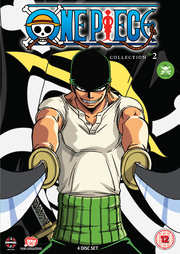

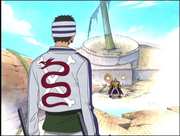
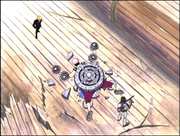
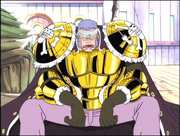
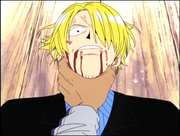
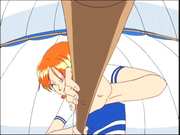
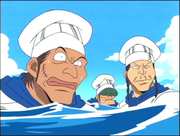
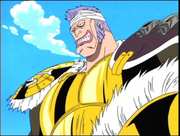

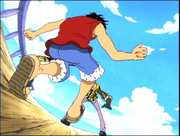
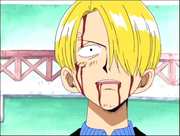
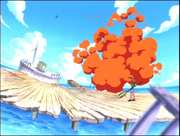
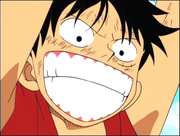
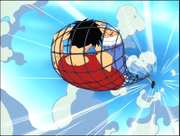
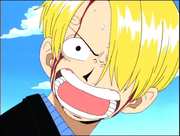
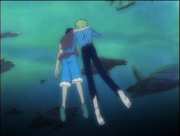
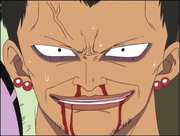
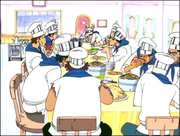
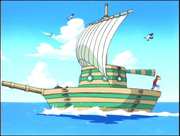
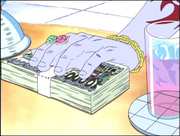

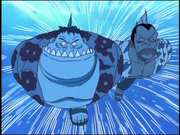

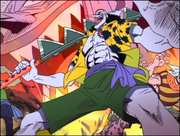
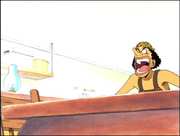
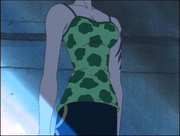
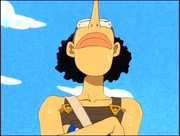


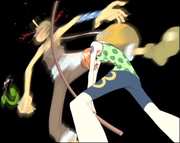













































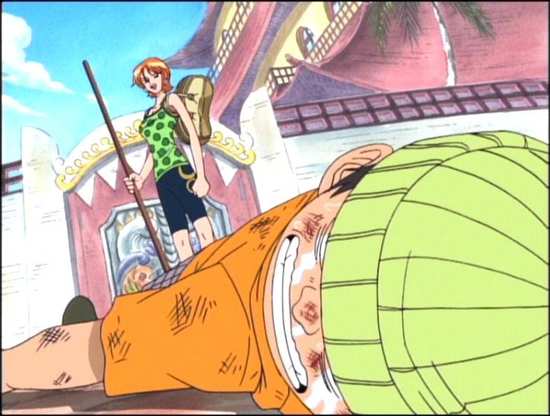




Your Opinions and Comments
Be the first to post a comment!